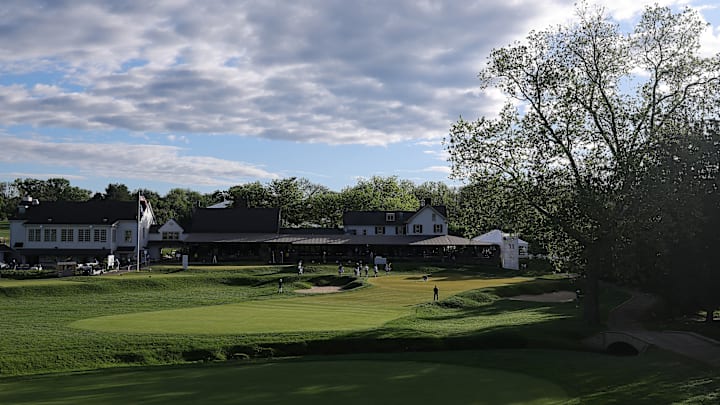The Truist Championship, formerly known as the Wells Fargo, is the sixth Signature Event of the 2025 PGA Tour season and is giving us a new look this year. With Quail Hollow hosting the PGA Championship next week, it was replaced by the Wissahickon Course at The Philadelphia Cricket Club.
But don't get too attached, as this is seemingly just a one-off.
Established in 1922, this Golden Age layout was designed by the legendary A.W. Tillinghast, who created the likes of Winged Foot, Bethpage Black, and Baltusrol, and this track certainly bears the signature bunkering and green complexes that define Tilly's style.
Philadelphia Cricket Club's Wissahickon Course is a beautifully understated parkland creation
Memorable Holes: 7.5
There are a number of unique holes that stand out at the Wissahickon Course. There is an old covered train trestle that runs through the property along Nos. 4 and 17 that is memorable in and of itself.
The par-5 15th is an outstanding hole; measuring 553 yards, the fairway is cut short off the tee by a huge field of bunkers and fescue. After turning right to left off the tee, the hole bends back to the right on the uphill second shot to a small green surrounded by bunkers and deep rough.
Interest: 9.0
The Wissahickon Course presents compelling shots throughout the entire round from tee to green, especially with the short game around the greens. The greens are pitched so severely that players will need to play multiple feet of break on numerous 10- to 20-foot putts.
The par-4 13th is a good example. At only 423 yards, less than driver must be used off the tee to stay short of a creek cutting through the fairway.
The second shot plays steeply uphill to a green guarded by two deep bunkers short and sloping so severely from back to front that players may spin their wedge shots back off the front of the green.
Par 3s: 9.0
The Philadelphia Cricket Club boasts outstanding par-3s. The 172-yard third features a raised green surrounded by deep bunkers on all sides; the green slopes steeply from right to left.
The eighth is the longest and most difficult at 240 yards; it plays a bit like a Redan hole as the green slopes primarily from front-right to back-left and is guarded by an eight-foot-deep bunker on the front-left side.
The little 14th is only 122 yards with a back-to-front-sloping elevated green surrounded by deep bunkers and a steep drop off on the left side.
Lastly, the 215-yard 16th is tight with a creek lurking a few yards short of the green and bunkers surrounding the remaining three sides.
Difficulty: 4.0
Overall, the Wissahickon Course is not very difficult as it is short and not very penal. The fairways are wide, and many of the greens aren't surrounded by much danger.
There are a few exceptions, however, such as the par-4 17th. At 498 yards, it is one of the most demanding par-4s on the course with a narrow fairway and a wild three-tiered green. Missing on the proper side and leaving the ball on the correct tier are paramount to avoiding a bogey on this hole.
Finish: 9.0
I am conflicted in rating the finishing holes because the PGA Tour re-routed the Wissahickon Course for the Truist Championship. The course's actual final three holes are playing as holes 9-11 this week, and the finishing holes for the tournament are holes five, six, and four of the true layout (in that order).
As I discuss on my podcast, Linksworms, I loathe when the PGA Tour perverts classic layouts this way, but I must admit that they chose these final holes well. The aforementioned 16th is a captivating par-3, followed by the extremely difficult par-4 17th.
The 18th is possibly the hardest hole on the course, a 517-yard par 4 with a very narrow fairway guarded by bunkers down the left side. The green is also guarded by bunkers and is relatively small considering the length of the hole.
The course may yield a lot of birdies, but they won't come at the final three holes.
Overall: 7.70
For the criteria used to determine these ratings, please click here.
